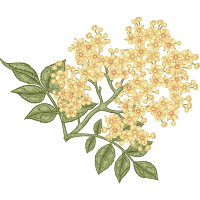Lovely, fruity notes with citrus and grapefruit, herbs and elderflower in the aroma. Pleasant and with a really nice freshness.
The moment for the Sauvignon Blanc and Sèmillon harvest was chosen by seeking the balance between sugar concentration and a maximum expression of the grapes’ aromas. The bunches of grapes were harvested manually, were immediately transferred to the cellar and cooled by passing through a refrigerated conveyor which, by lowering the temperature before pressing, preserved the characteristic aromas of the grapes. After soft pressing, the must was stored for a few hours at a temperature of 10 °C to allow natural clarification and then transferred to stainless steel tanks where alcoholic fermentation took place at a temperature not exceeding 16 °C. Afterwards, the wine was kept at a temperature of around 10°C to prevent malolactic fermentation from taking place and to keep the organoleptic properties unchanged. The two grape varieties were then combined so that one could “complete” the other. Fresh, light and aromatic Sauvignon Blanc and soft and tropical Sèmillon.
Castello della Sala is the Umbrian property of the Antinori family. It is beautifully situated a few kilometers from Orvieto and covers around 500 hectares. Conte della Vipera is an international blend of Sauvignon Blanc and Semillon that comes from vineyards located on hills up to 350 meters above sea level. Aged in steel, it is a wine that can give great satisfaction despite its simplicity.
93 POINTS
Luca Maroni
90 POINTS
Robert Parker
Conte della Vipera is a blend of Sauvignon Blanc and Sémillon, and what I like most about this vintage is that you can make out the distinct characteristics of each. The Sauvignon Blanc chimes loudest with floral fragrances and jasmine, and the Sémillon pops in with honey and dry grass or hay. This cool vintage sports a dot of green lime or tropical fruit as well.
90 POINTS
Wine Spectator
A sleek, zesty, mouthwatering white, light- to medium-bodied and aromatic, with hints of chive blossom, ripe apricot, flint and lemon peel. Offers a minerally, lip-smacking finish. Sauvignon Blanc and Sémillon.
About Antinori
Italian Marchesi Antinori is 26 generations of absolutely world-class wine history. 630 years is almost hard to understand when it comes to one and the same family of wine producers. But Antinori can trace its history all the way back to 1385, when Giovanni di Piero Antinori was admitted to the ‘Arte Fiorentina dei Vinattieri’, the order of winemakers in Florence. Today, Marchesi Antinori is a member of Primum Familiae Vini – an association of 12 of the most prestigious, family-owned wineries worldwide. It doesn’t get much bigger than this.
Already in Renaissance Florence, the Marchesi Antinori was a very successful wine house, and Allesandro Antinori was one of the richest residents of the city, which was the center of the great thinkers and artists of the time such as Leonardo da Vinci and for writers such as Dante Alighieri, who wrote his Divine Comedy. Marchesi Antinori is to this day a family-owned company, where values such as enormous care, focus on even tiny details and the desire to constantly become more skilled lie beneath the skin. Through 26 generations, the family has shaped Italian winemaking with innovative and sometimes bold decisions, but always with a fundamental respect for tradition. In 1974 Marchesi Antinori launched his first Tignanello on the market, one of the first so-called `Super Toscanes’. The wine shook up the Italian wine world and changed what could be done in the boot country. Created on a blend of Sangiovese and the then ‘forbidden’, foreign grape varieties Cabernet Sauvignon and Cabernet Franc, Piero Antinori was one of the great innovators in a brand new wave of super-Tuscans, which one dared to create without discriminating against old rules and standards. Today, Tignanello is considered to be one of the most important wines in the entire wine history of Italy.
Antinori thus already has many more chapters in its history than the vast majority of wineries. But the final chapter is still far from being written. You will be assured of this when you drive up in front of the distinguished winery. Here, everything is done tastefully, from the works of Leonardo da Vinci and Giovanni Della Robbia on display to the lighting in front of the elevator, which leads up to the small restaurant overlooking the vineyards. Although the old roots play a big role in the family’s daily work and in the visions for the house and each individual wine, it has never put an end to Antinori’s always innovative spirit, as the example of Tignanello shows. They research new local and international grape varieties and experiment with alternative cultivation methods, fields at varying heights, fermentation methods, different casks for barrel aging, etc. Today, Albiera Antinori is the director of Marchesi Antinori with the support of the sisters Allegra and Alessia. Their father, Marchese Piero Antinori, is Honorary President of the family business.


